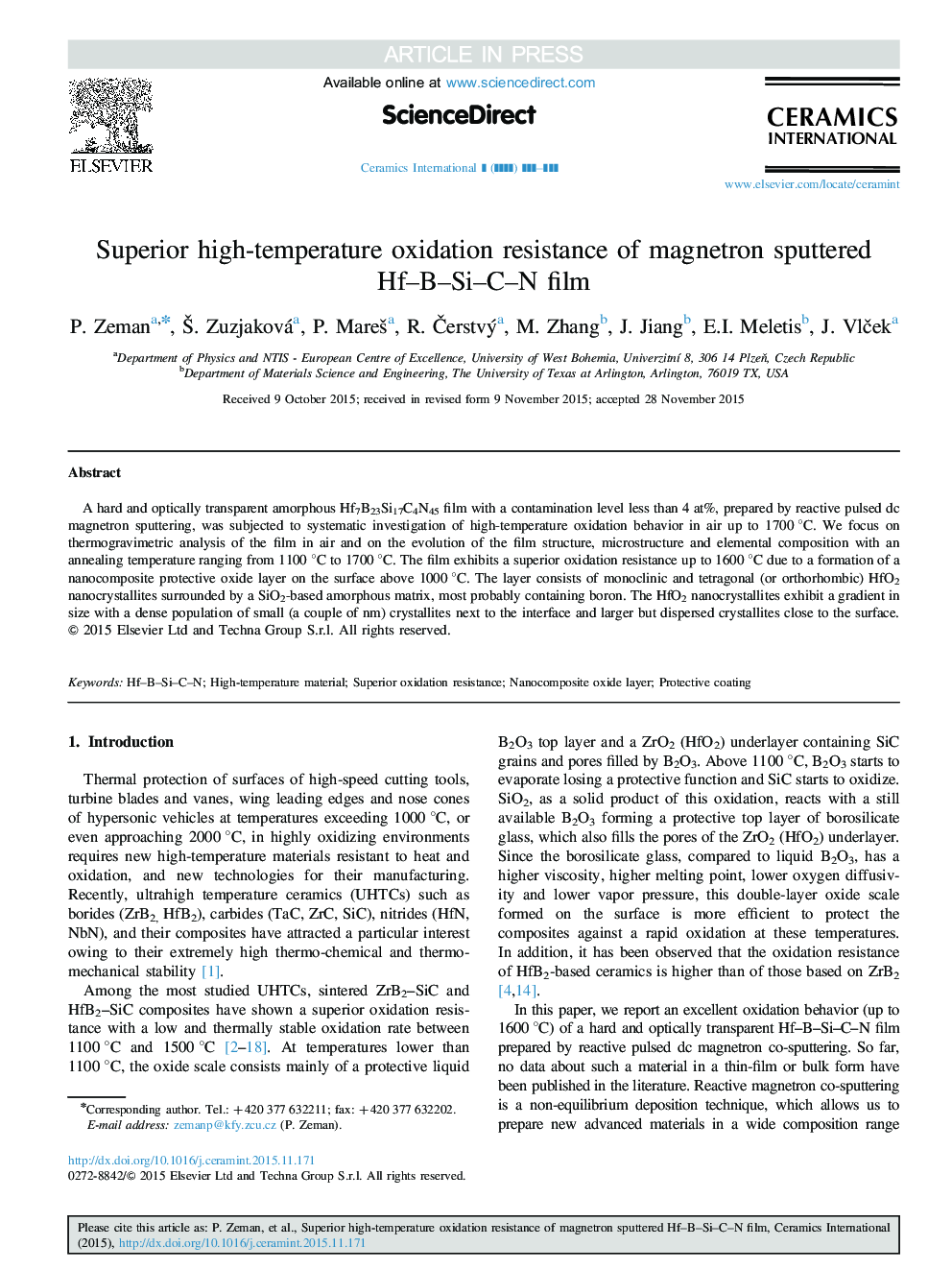| Article ID | Journal | Published Year | Pages | File Type |
|---|---|---|---|---|
| 10624354 | Ceramics International | 2016 | 7 Pages |
Abstract
A hard and optically transparent amorphous Hf7B23Si17C4N45 film with a contamination level less than 4 at%, prepared by reactive pulsed dc magnetron sputtering, was subjected to systematic investigation of high-temperature oxidation behavior in air up to 1700 °C. We focus on thermogravimetric analysis of the film in air and on the evolution of the film structure, microstructure and elemental composition with an annealing temperature ranging from 1100 °C to 1700 °C. The film exhibits a superior oxidation resistance up to 1600 °C due to a formation of a nanocomposite protective oxide layer on the surface above 1000 °C. The layer consists of monoclinic and tetragonal (or orthorhombic) HfO2 nanocrystallites surrounded by a SiO2-based amorphous matrix, most probably containing boron. The HfO2 nanocrystallites exhibit a gradient in size with a dense population of small (a couple of nm) crystallites next to the interface and larger but dispersed crystallites close to the surface.
Related Topics
Physical Sciences and Engineering
Materials Science
Ceramics and Composites
Authors
P. Zeman, Å . Zuzjaková, P. MareÅ¡, R. Äerstvý, M. Zhang, J. Jiang, E.I. Meletis, J. VlÄek,
